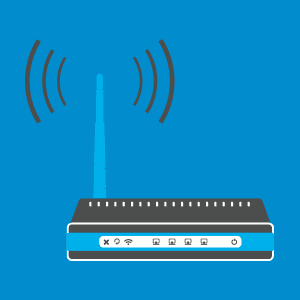HouseholdsIn Como (Hopkins County), TX, the aggregate number of households is 15,622 |
Median IncomeHouseholds in the city of Como (Hopkins County), TX have a median income of $44,844. |
PopulationThe total population in the city of Como (Hopkins County), TX is 34,685 |
DSL TechnologyApproximately 64.22% of consumers in the city of Como (Hopkins County), TX have access to DSL internet |
Fiber TechnologyApproximately 66.19% of consumers in the city of Como (Hopkins County), TX have access to fiber-optic internet. |
Cable TechnologyApproximately 45.62% of consumers in the city of Como (Hopkins County), TX have access to cable internet. |
Wireless TechnologyApproximately 100% of consumers in the city of Como (Hopkins County), TX have access to mobile broadband internet. |
Average upload speedFor residents in the city of Como, TX, the city-wide average upload speed is 11 Mbps |
Average download speedFor residents in the city of Como, TX, the city-wide average download speed is 11 Mbps. |
Internet Service Providers in Como, TX


Call (858) 947-7574

Internet Service Providers in Como, TX
| Provider | User Rating | Phone Number |
|---|---|---|

|
|
(858) 947-7562 |

|
|
(205) 946-1154 |

|
|
(858) 947-7547 |

Find and Compare the Best Internet Service in Como, TX
When choosing new Internet service, it's important to understand the advantages and disadvantages of DSL, satellite, and cable internet connections in Como, TX, and how they work.
In today's world, internet users have a wide variety of high-speed internet services to choose. Some of the most popular internet services available are cable Internet, fiber optic internet, DSL, and satellite internet. The market has become extremely competitive with all of these options available. With this fierce competition raging on, prices are going down, streaming speeds are increasing, and there is usually a wide variety of internet package deals available to choose. Most package deals include your internet, phone, and TV services at a discounted rate.
Services such as MyRatePlan allows customers to find the greatest deals on high-speed Internet in the greater Como, TX area. When you choose MyRatePlan, we make sure to get you the best provider and internet service which are compatible with your current phone and TV service. All you need to do is enter your ZIP code into the search bar at the top of the page.
If you're after an internet service provider for your business, MyRatePlan has a separate service page for those plans. If you're unsure of your current bandwidth usage, MyRatePlan has an internet speed test available, which is compatible across all platforms and doesn't require any flash players or JavaScript to run.

Como, TX Cable Internet Providers
Many cable companies offer high-speed cable internet, telephone, and television services in Como, TX. The firms create a physical connection between their subscribers and their nearest location by using fiber optics or coaxial cables. The clients use cable modems to access internet services. The cable modems use bandwidth from television channels to connect them to the web. MyRatePlan's broadband comparison enables you to locate the most suitable cable internet for your needs.
It is easy to combine internet and television services because they require a small amount of bandwidth. Many cable firms in the region provide their clients with bundles of internet, television, and telephone services. In some instances, they offer a combination of the three. It is easy to add internet services to existing television or phone services because they all use the same cables. All you have to do is install your modem. Cable internet is advantageous because the quality of your internet connection is not affected by the proximity of the user and the provider's office.
It is convenient to have cable internet if you do not share a cable channel with any other person. However, residents who live in highly populated areas of Como, TX, can experience a decline in internet speeds and have some problems using cable internet. The problem arises when many users share large data files or stream multiple videos. Sharing channels leads to sharing of the same bandwidth. Clients should keep in mind that a combined telephone, television, and internet service bundle is a good deal. However, the services might be slightly cheaper if they were purchased separately. You can use the MyRatePlan tool to view the different prices of each service.

Compare Fiber Optic Internet Providers in Como, TX
What is all the talk about fiber optic Internet about? Fiber optic Internet services, often referred to as “FiOS,” use fiber optic cables to transmit data using light, instead of electricity. On the cutting edge of digital technological advances, fiber optic cables can transmit data at speeds approaching the speed of light with minimal signal loss or weakening across large distances. However, this does not mean that your actual download speeds will approach futuristic light speed levels. Fiber optic cables only ensure strong and reliable connections between traditional electric hubs, and your internet service will likely still be limited by electronic hardware such as your router or Internet service provider. Fiber optic networks are often seen as the most “future proof” internet connection and may provide superior download speeds and ultra-low latency in certain areas of Como, TX.

Selecting the Best DSL Internet Service in Como, TX
A digital subscriber line (DSL) is different from cable Internet in that it utilizes the phone line to create an Internet connection rather than a cable line. A telephone line has extra bandwidth that isn't needed to make telephone calls, and it is this extra bandwidth that is used by the DSL connection to provide high-speed Internet to the home, apartment, or other residence. Similar to cable Internet, DSL requires a user to connect to the Internet via a modem.
Even though a DSL customer must use the phone line to access the Internet, it's possible to make telephone calls and access the Internet simultaneously. One of the interesting features of DSL is that it's not a shared line like a cable Internet line, which means a customer may enjoy a more consistent speed than with cable Internet, even if the top available speed is lower than local Como, TX cable Internet options.
DSL works best when the home receiving Internet service is reasonably close to the service provider's local office. Therefore, if a home or apartment isn't close to the Como, TX DSL service provider's office, cable Internet or another high-speed Internet option may offer a better experience and higher maximum speed. In addition, anyone who doesn't have a landline and relies on their cell phone for calling will need to set up home telephone service to use DSL.

Satellite Internet Services in Como, TX
Many residents of Como, TX are looking for satellite Internet, and they want to get the best deals available. Satellite Internet uses a satellite dish and doesn't work like cable or DSL. To use this Internet connection, you must have a satellite dish, and it must face towards the equator. A modem is needed to establish a connection between your computer and satellite dish. Once you're paying a service provider, the satellite dish receives a signal that is beamed down from a satellite. The modem translates the data and provides a working Internet connection.
Satellite Internet service isn't terribly popular with residents of Como, TX because it's not as fast as cable or DSL. However, it's almost always the best option for people who live in rural, remote areas because it's not cost effective for providers to install physical lines in these areas. Cable and DSL tend to be the best options for most people who don't live in rural areas.
Find Internet Service Providers in
- Mineola, TX
- Emory, TX
- Lone Oak, TX
- Lake Creek, TX
- Fruitvale, TX
- Klondike, TX
- Alba, TX
- Talco, TX
- Sulphur Bluff, TX
- Saltillo, TX
- Scroggins, TX
- Mount Vernon, TX
- Grand Saline, TX
- Leesburg, TX
- Hawkins, TX
- Winfield, TX
- Brashear, TX
- Cumby, TX
- Point, TX
- Pickton, TX
- Campbell, TX
- Cooper, TX
- Sulphur Springs, TX
- Pittsburg, TX
- Dike, TX
- Quitman, TX
- Yantis, TX
- Winnsboro, TX
- Cunningham, TX
- Golden, TX
ZIP Codes in Como, TX
- 75431


 Menu
Menu